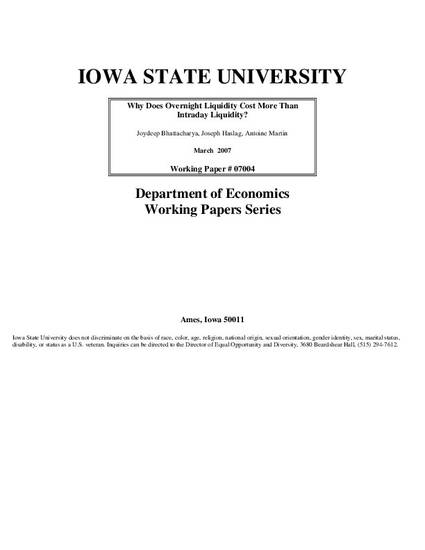
Article
Why does overnight liquidity cost more than intraday liquidity?
Journal of Economic Dynamics and Control
Document Type
Article
Disciplines
Publication Version
Submitted Manuscript
Publication Date
6-1-2009
DOI
10.1016/j.jedc.2008.12.001
Abstract
In this paper, we argue that the observed difference in the cost of intraday and overnight liquidity is part of an optimal payments system design. In our environment, overnight liquidity affects output while intraday liquidity affects only the distribution of resources between money holders and non-money holders. The low cost of intraday liquidity is explained by the Friedman rule. The optimal cost differential achieves the twin objective of reducing the incentive to overuse money at night and encouraging payment-risk sharing during the day.
Copyright Owner
Elsevier B.V.
Copyright Date
2009
Language
en
File Format
application/pdf
Citation Information
Joydeep Bhattacharya, Joseph Haslag and Antoine Martin. "Why does overnight liquidity cost more than intraday liquidity?" Journal of Economic Dynamics and Control Vol. 33 Iss. 6 (2009) p. 1236 - 1246 Available at: http://works.bepress.com/joydeep_bhattacharya/47/

This article is published as Why Does Overnight Liquidity Cost More Than Intraday Liquidity? (with A. Martin and J. Haslag),Journal of Economic Dynamics and Control, 33(6), 1236-1246, 2009. DOI: 10.1016/j.jedc.2008.12.001; Posted with permission.